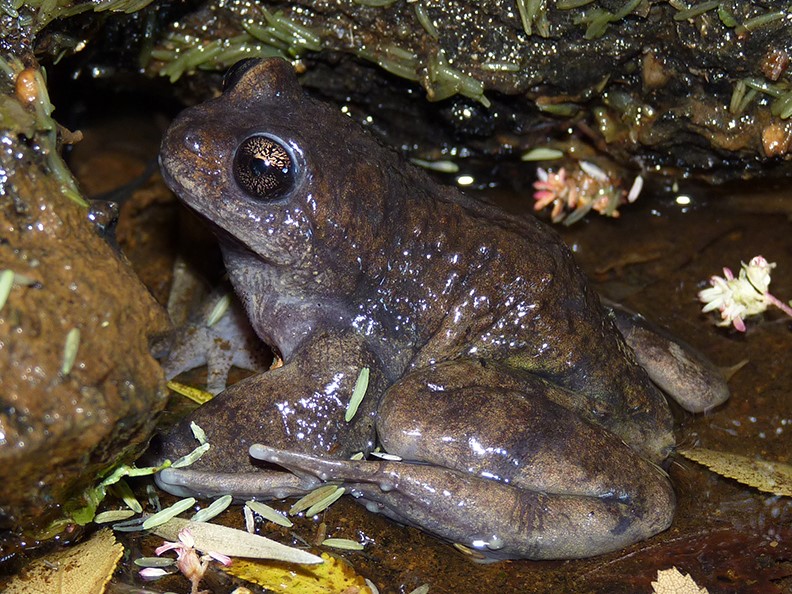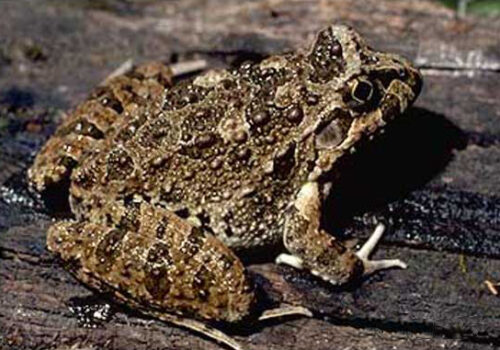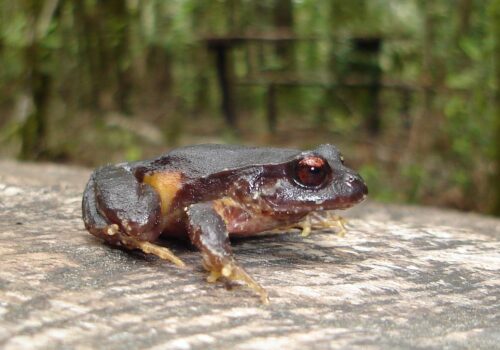- <<<a href="/?p=4831">Allophryne ruthveni</a>="/?p=4829">Allophryne resplendens</a>="/?p=4828">Allophryne relicta</a>: The Enigmatic Frog of Patagonia's Hidden Waters
<<Allophryne ruthveni=”/?p=4829″>Allophryne resplendens=”/?p=4828″>Allophryne relicta: The Enigmatic Frog of Patagonia’s Hidden Waters#
Beneath the lush canopy of Patagonia’s temperate forests, where moss carpets stream banks and secretive ferns curl at the edges of crystalline pools, lies an elusive amphibian masterfully camouflaged among dew-covered leaves and rocky streambeds—Alsodes australis. Known commonly as the Austral spiny-chest frog, this remarkable amphibian dwells in remote streams and puddles, quietly playing its role in maintaining the fragile ecological web of southern Chile and Argentina. Despite its modest presence and gentle behavior, its quiet existence speaks volumes about the health of its pristine habitat, serving as a living indicator of environmental integrity.
To better understand this beautiful yet lesser-known representative of Patagonia’s biodiversity, we delve deep into its taxonomic roots, ecological niche, fascinating life history, and the pressing conservation concerns surrounding it.
Taxonomy and Classification#
Alsodes australis belongs to the family Alsodidae, a group of frogs whose distribution centers prominently in southern South America. Within this family, the genus Alsodes is recognized for its diversity in Chile and western Argentina, inhabiting a wide range of freshwater habitats. Named scientifically by Formas, Úbeda, Cuevas, and Nuñez in 1997, Alsodes australis is among the relatively recently described members of its genus, highlighting both the complexity of amphibian biodiversity worldwide and the ongoing scientific discovery sweeping even well-studied ecosystems.
Related closely to other members of the genus Alsodes, such as Alsodes gargola and Alsodes montanus, these species share similarities in morphology, behavioral patterns, and habitat preferences. Nevertheless, the unique isolation and environmental conditions of Patagonia have shaped Alsodes australis in particular ways, carving out ecological uniqueness that continues to captivate researchers and conservationists alike.
Natural Habitat#
Alsodes australis has adapted to life within a specialized niche—hidden freshwater streams, marshes, and sometimes even temporary pools within temperate forest ecosystems. Specifically, the species inhabits regions of southwestern Argentina and neighboring southern regions of Chile, including distinct habitats around Nahuel Huapi National Park and adjacent temperate rainforests.
A Habitat Defined by Water and Woodland#
Picture yourself in the shadowy embrace of an ancient southern beech forest, known locally as Nothofagus forests, where rays of sunlight gently filter through dense foliage, dappling quiet brooks and ephemeral marshes below. It is within such secluded sanctuaries that the Austral spiny-chest frog finds its optimal world. The consistently cool temperatures, high humidity, and the protective cover created by dense vegetation offer the perfect conditions essential for the frog’s moisture-sensitive skin and amphibian physiology.
These frogs thrive in pristine freshwater ecosystems characterized by clear, pollution-free water, abundant leaf litter, lush bankside vegetation, and an undisturbed forest canopy. Their presence is, therefore, a confirmation of ecological purity, marking areas untouched by significant human disturbance and industrial pollution.
Physical Characteristics#
The first glance at Alsodes australis reveals a truly cryptic creature, master of disguise, modest in size yet charmingly adapted to its moist, shaded home. Adult individuals typically measure between 4 and 7 centimeters (around 1.5 to 2.7 inches), their robust bodies ideally suited for their semi-aquatic existence.
They exhibit a color palette inspired distinctly by their forested home—olive, brown, and subtle green hues—patterned intricately to mimic the mulch-covered forest floor and humidity-laden moss. Their rough-textured skin further amplifies their camouflage, resembling bark or wet leaves, allowing for nearly seamless concealment within their surroundings.
Unique Adaptations for Survival#
The ‘spiny-chest’ descriptor of their common name emerges from specialized keratinized structures, tiny but firm spines present especially on the chest and limbs of adult males. These spines assist males during territorial disputes and mating rituals occurring during breeding season. They help males clasp firmly onto prospective mates, ensuring continued reproductive success in the swift-moving currents and slippery microhabitats they inhabit. Such minute anatomical specialties highlight how even small physical adaptations can significantly shape reproductive success and survival within competitive environments.
Behavior and Life Cycle#
Like many amphibians, Alsodes australis is predominantly nocturnal, emerging quietly under the muted glow of moonlit evenings. Removed from human disturbance, nights in the ancient forests become lively, filled with delicate rustles and subtle croaks of frogs calling softly to potential mates or ambushing passing prey.
Feeding Habits and Hunting Strategies#
This species feeds primarily on small invertebrates—crickets, beetles, spiders, and aquatic insect larvae. Adept hunters, they employ a sit-and-wait tactic, remaining motionless until unsuspecting prey journeys within reach. In a flash of surprising agility, propelled by powerful hind legs, they capture prey swiftly using their specialized sticky tongues until fully satiated for their nocturnal wanderings.
Mating Rituals and Tadpole Development#
Spring’s warmth and the gentle renewal of streamflow mark the onset of the breeding season. Male frogs stake out quiet pools and shallow streams, calling softly to attract females, producing faint but intriguing vocalizations adapted to travel clearly through dense forest vegetation.
Female frogs entrust their eggs—tiny gelatinous orbs each holding the promise of life—to the safety of hidden aquatic or semi-aquatic hideaways along stream edges. Upon hatching, tadpoles adopt swift currents and quiet pools as nurseries, their early days marked by essential algae consumption and subtle coloration that protectively blends into their forest stream environment. As metamorphosis progresses, the tiny tadpoles undergo remarkable physical transformations, gradually emerging into carefully adapted juvenile frogs capable of navigating both aquatic and terrestrial environs uninterrupted.
Ecological Role#
Alsodes australis, though small and often overlooked, harbors significant ecological importance as a key link within the complexities of the Patagonian temperate forests. Amphibians are effective biological indicators—any alteration or distress in their environment rapidly becomes evident in their health, behavior, and populations.
These frogs actively regulate insect populations, thus playing a dynamic role in pest management and maintaining biodiversity equilibrium. Simultaneously, they serve as crucial prey items for multiple predators within this delicate biome, from ribbon snakes and aquatic predatory insects to forest birds and small mammals, thus reinforcing their indispensable place in the larger food web.
Threats and Conservation Status#
Due to the species’ specific ecological requirements, any disruption—pollution, deforestation, habitat degradation—poses severe risks to frog populations. Currently, the International Union for Conservation of Nature (IUCN) categorizes Alsodes australis as Near Threatened, underscoring the concern for future stability amidst ongoing environmental pressures.
Ongoing Conservation Efforts#
Conservation movements and research programs at regional nature reserves in Patagonia, notably within national parks such as Nahuel Huapi in Argentina, are imperative for safeguarding this enigmatic amphibian. Dedicated initiatives aim to mitigate threats through education, legislative reinforcement to protect critical habitats, and thorough monitoring of local populations to inform timely and science-based conservation actions.
You may be interested in learning about other emblematic Patagonia wildlife—explore this article on the region’s endangered southern Andean deer (Huemul deer conservation) or discover primary causes behind amphibian declines globally by reading more on amphibian diseases and habitat loss (Amphibian Declines).
Cultural and Scientific Significance#
Beyond functional roles, frogs like Alsodes australis embody cultural reverence within Patagonia, respected as symbols of environmental purity and balance within indigenous and local communities. Scientifically, studying these frogs opens windows into climate change research, pollution impacts, and biodiversity health, acting as living indicators sensitive to even subtle shifts in environmental quality.
Conclusion: Guardians of Patagonia’s Ecological Integrity#
Alsodes australis is more than just a humble frog of Patagonia’s damp undergrowth. It stands as a tacit sentinel signaling ecological balance, heritage preservation, and the pressing need for responsible stewardship of our planet’s remaining wild spaces. Only through determined conservation, guided by scientific insight and genuine love for wild things, can we ensure the continued coexistence of this subtle creature and the broader ecological tapestry it supports.
To explore more on efforts protecting species like Alsodes australis, visit our dedicated conservation hub (Wildlife Conservation Initiatives). Together, we can safeguard the guardians of our ecosystems—the magnificent tapestry that supports all life.










